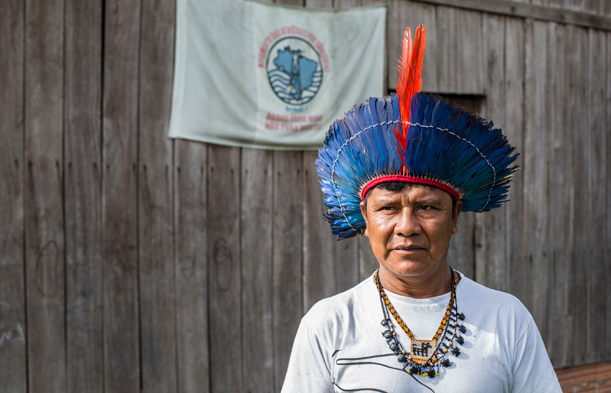Funai recognizes the traditional Munduruku territory in Tapajós
Yesterday, April 19th, date which celebrates the Day of the Indigenous People in Brazil, the federal organ responsible for policies for indigenous people, Funai, published at the Official Federal Paper […]
Publicado 20/04/2016
Yesterday, April 19th, date which celebrates the Day of the Indigenous People in Brazil, the federal organ responsible for policies for indigenous people, Funai, published at the Official Federal Paper the Report of Identification and Delimitation of the Indigenous Land Sawré Muybu, of the Munduruku people and three other indigenous lands in Brazil, which allows the demarcation of indigenous lands.
 Cacique Juarez, from the village Sawré Muybu, at TI Sawré Muybu. Photo: Joka Madruga
Cacique Juarez, from the village Sawré Muybu, at TI Sawré Muybu. Photo: Joka Madruga
By this, Funai recognizes the traditional occupation of the indigenous people. The studies are a first step to the process of demarcation of these indigenous lands.
The demarcation of the land Sawré Muybu is a demand of the Munduruku people, who live in these territories for more than thousands years, as proven in archeological sites. The indigenous land extending in 178,173 hectares between the municipalities of Itaituba and Trairão, in the state of Pará.
The indigenous people denounced that this process was blocked due to the intention of the electric sector to build in the region the hydro-power complex of Tapajós. The auction of the hydropower project of São Luís do Tapajós, of 8,040 MW is planned to happen at the end of this year and plans to flood 7% of the area. The Federal Constituion forbids the removal of indigenous people of their land.
This repport presented yesterday is susceptible of denial within the limit of 180 days.
In MAB’s evaluation there is a real risc of denial of this repport if the impeachment of the President Dilma Rousseff takes place.
“Although we recognize that Dilma’s government has done little in relation to the rights of the indigenous people, we know that the possible Temer government will take over an even more conservative agenda, says Frede Vieira, MAB activist of the region of Tapajós.
Indigenous lands
The report also recognized the lands of Ypoi/Triunfo, Sambaqui in the state of Parana and Jurubaxi-Téa in the state of Amazon.
The land of Ypoi/Triunfo has 19,756 hectares where the Guarani Ñandeva people live in the state of Mato Grosso.
In the municipality of Pontal do Paraná, in the state of Paraná, the indigenous land Sambaqui has 2,795 hectares where the Guarani Mbya people live.
The Jurubaxi-Téa indigenous territory has 1,208.155 hectares localized in the state of Amazonas, where lives the indigenous groups Arapaso, Baniwa, Baré, Desana, Kuripaco, Nadöb, Pira-Tapuya, Tikuna, Tukano and Tariana.
This is the second good surprise for the indigenous people this month. On April 4th after decades of struggle the indigenous land of Cachoeira Seca has been officially recognized. This territory belongs to the indigenous group Arara, which has been impacted by the hydropower dam Belo Monte.

